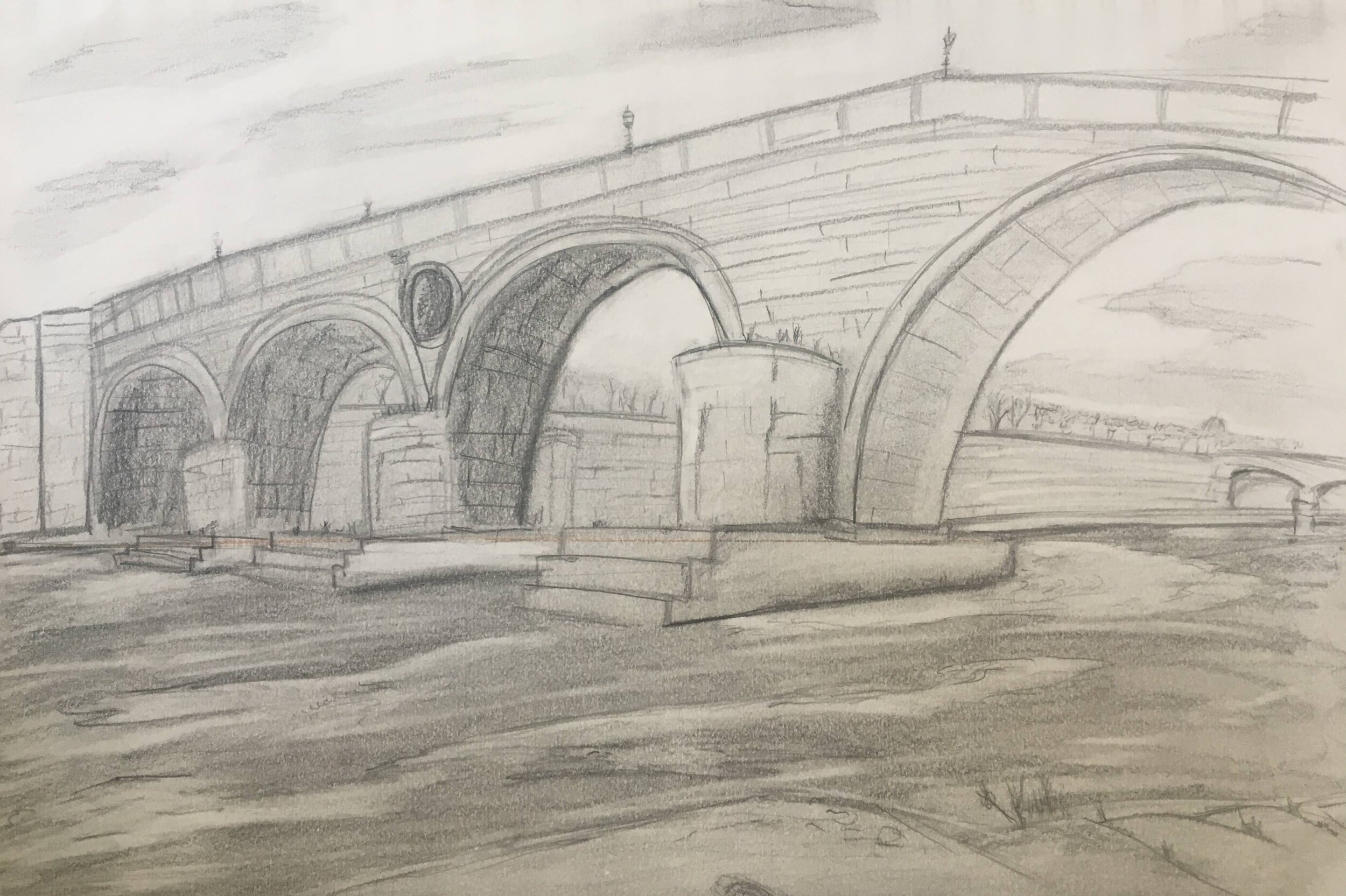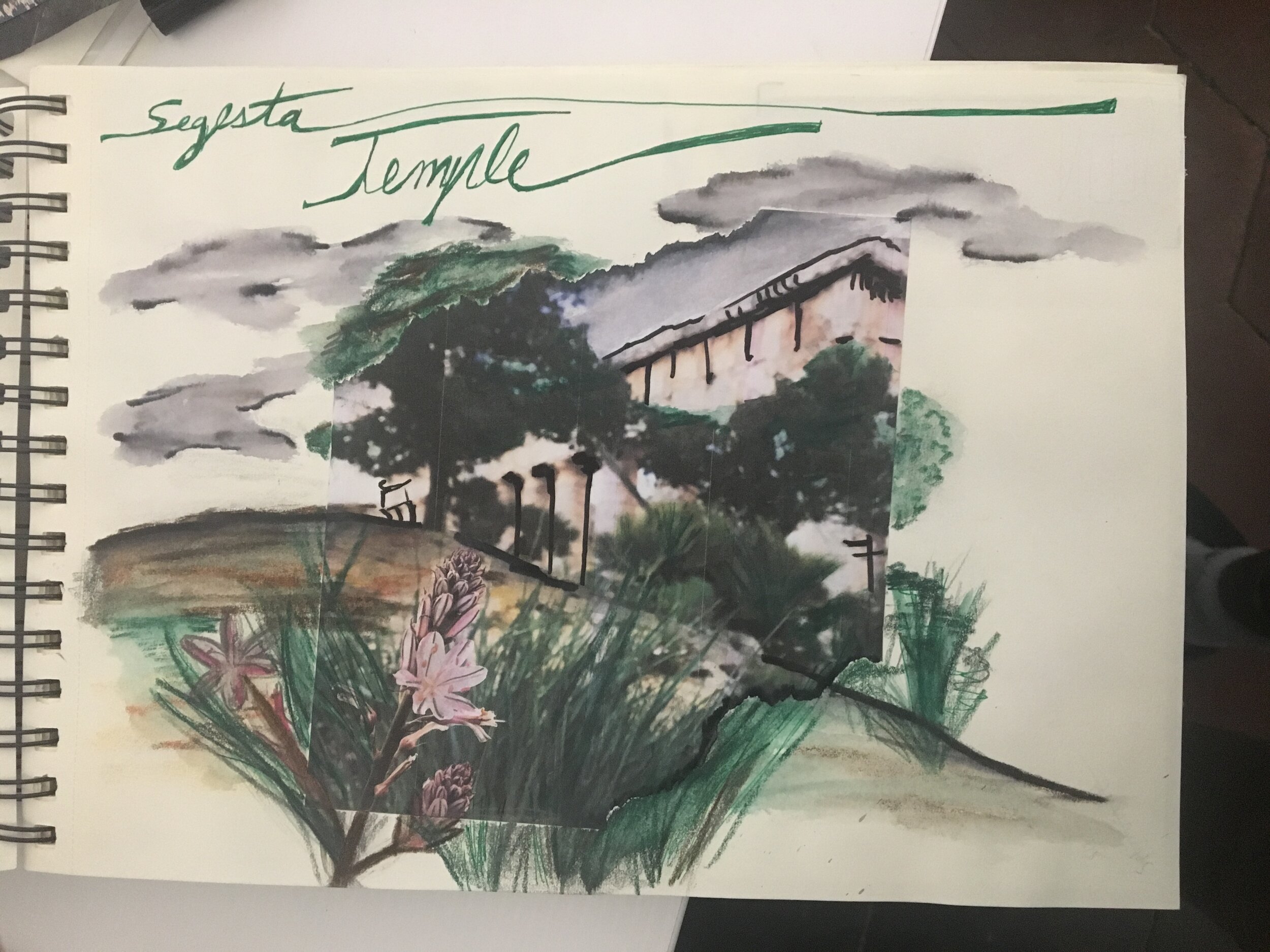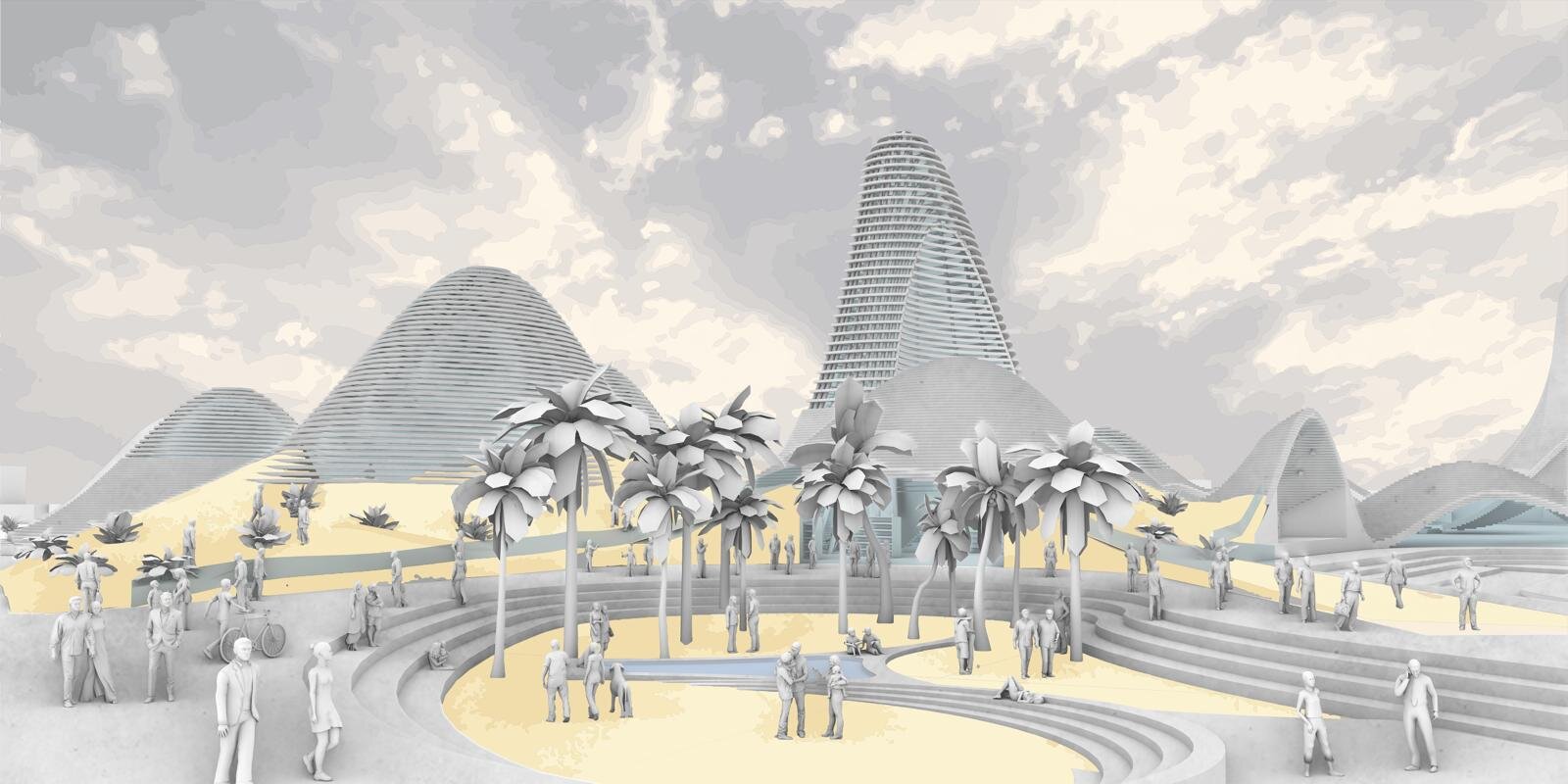SARAHDJANE MORTIMER
Portrait courtesy of Sarahdjane Mortimer.
Junior Architectural Designer at Bergen Street Studio
2019 Pratt Institute Graduate
Raised in Port-au-Prince, Haiti, Sarahdjane has always believed in the change that architecture can make for the world. Her passion for connecting to people through design has left her with a strong desire to set her foundation as an architect. Her interest in innovative, social, and urban projects inspires her to great things on an international scale, particularly in her home country of Haiti. With that in mind, she looks forward to learning more about the aspects of sound design, and empowerment in areas of conflict as she continues to develop her methods and style of design.
Ensuring Diversity and Equity through Balance in Architecture
What is your favorite dish?
My favorite dish is “tassot kabrit, diri blan ak sos pwa frans”; a haitian dish made up of fried goat meat, with white rice and sweet green pea sauce.
What is your favorite song by a Black artist?
My favorite song by a black artist is “Dream a Little Dream of Me” by Ella Fitzgerald and Louis Armstrong.
Three additional facts about Sarahdjane:
I traveled to 37 new cities in 2018, while in study abroad programs in Rome (spring 2019) and Berlin (summer 2018).
I rode horses growing up.
I speak four languages: English, French, Haitian Creole, Italian.
What inspired you to study architecture?
After devastation ravaged the place I call home, I was intent on finding how I can make a difference. Having grown up in Haiti infrastructure is scarce and often one of our biggest issues that keep up from being the nation we can be. It is not enough to say this is where my story began, but on January 12th, 2010, after the ground shook with fervor, something inside me was ignited; as the compassion for and solidarity with my people deepened, so sparked my curiosity for design. Thus sets in motion my journey. An integral part of this journey is rooted in education, a means for placing myself in the best atmosphere to stimulate growth; that which stems from discourse and newfound ideas, connections, and potential solutions. As architects and activists, we must focus on social connectors; with our power to translate with space, we can engage the crucial issues of our time across all scales for the built environment; this enticed me greatly. When daring to tackle a plentitude of problems that all come down to bodies in space, disability and disproportionate access to spaces is an issue we have to put at the forefront. The responsibility to step outside my bubble and understand, translate, and connect to the world around me has left me with a clear understanding of how the opportunities granted to me can allow me to make a difference. Growing up in Haiti, all it took to shed light and focus on the direct relationship between the built environment and the inequities that it constructs, was a glance outside of my car window, as the disparities in wealth among just a few million on one small island were so very vast. But on that day of the devastating earthquake, the separations came down, our connection was evident; a connection to the land we call home.
Barcelona Pavilion in 2018. Image courtesy of Sarahdjane Mortimer.
Centre Pompidou in 2018. Image courtesy of Sarahdjane Mortimer.
Name a Black architect/artist who most influenced you as an emerging professional. How did they?
In my current endeavors, partnering with and learning from the founder of Beyond the Built Environment, Pascale Sablan, I am finding my voice in the architecture and advocacy world. It has been an honor to collaborate with her on the initiatives she puts forth for minorities in and out of the field of architecture. She is helping to further shape me into a similarly community-oriented role model, the kind of role model that my undertaking in undergrad has also helped me become. Supporting first-year students architecture students as a teacher's assistant, and fostering community connections as a resident advisor, developing space for social development between freshmen are just a few ways I've recently played a part in my community. Like my mentor Pascale, the 315th living Black female registered architect in the US, I look to provide a platform to support diverse audiences, advocate for equity, promote productive discourse, and exchange conducive to problem-solving. I strive to be up there with her, on that ever-growing list that represents so much more than skin tone and gender; but a larger community of intersecting identities.
Chiesa di San Ignazio in 2018 - charcoal and water sketch. Image courtesy of Sarahdjane Mortimer.
Final Presentation in Spring 2016. Image courtesy of Sarahdjane Mortimer.
Name a favorite project designed by a Black Architect. Why is it your favorite?
My favorite project designed by a Black Architect is the National Museum of African American History & Culture in DC, by David Adjaye. I visited this work of art for the second time this past year, and it struck me each time as a powerful work that embodies the pain, journey, and beauty of being black in the US. The architecture on its own provoked so much thought and emotion, and all came together as the displays as well as occupants circulated the space. My favorite part was the ramps that led you from one display to another, that then opened up to larger moments, poignant pockets in history with significant impact.
Napoli_Sketchbook 2018. Image courtesy of Sarahdjane Mortimer.
How does your culture affect your studies and the way you design?
My cultural representation is pivotal to achieve a sense of belonging, especially for communities with a history of erasure. An aspect I am interested in expressing through my design is breaking the pattern of intentional erasure, rooting our design in history: the evidence with which we create connections. We must shed light on those motives of erasure, not for the sake of erasing them too, instead to learn from the power of intentionality that architecture holds. Consequently, through my years of research and collaboration at Pratt Institute, and through my drive to master the architecture craft in practice at Bergen Street Studio this past year, my role is coming to light. The role that culture plays in this falls at the center, a pivotal point for developing connections, opening up doors for advocacy, building a framework for empowerment, and clear representation through education, not just for me but also for the communities that see some part of themselves in me. Additionally, I am doing my part in connecting with Haitian designers like me through casual encounters, competitions, and networking scenarios.
Ponte SIsto 2018: Graphite pencil sketch. Image courtesy of Sarahdjane Mortimer.
Are there any organizations that helped you grow in architecture? How did they help you grow?
A few years ago, I started attending AIA Diversity and Inclusion meetings at the center for architecture. I got the chance to meet a variety of people both at the start of their architecture career and in more advanced stages. Through gripping conversation and enticing stories, I developed a deeper understanding of the role that architecture played for others in various stages of the profession. With each meeting, I connected to others on a deeper level and through conversations came growth. It is here that I engaged with a contact who helped me get the current position of Junior architect that I am in.
Segesta Temple: sketchbook 2018. Image courtesy of Sarahdjane Mortimer.
Tell us about your passion for ballet and tennis. How do you manage your time practicing architecture while doing additional activities that you enjoy?
I grew up dancing ballet and playing tennis as young as the age of 4. Though at the time it wasn't much of a choice, with time came the freedom to choose; thus I developed an understanding for the importance of those activities. With ballet, I learned discipline, pattern making and developed the ability to match movement with rhythm. Coming to college and lacking a proper sense of balance in the beginning, ballet became a way for me to stop and restructure myself. On the less serious side of things, ballet taught me to go with the flow; whether it be that of music or of life, my muscles have not forgotten to move to the beat just when it feels right. My passion for tennis came from a different form of activity. Playing tennis, running back and forth on that court, reminded me of my speed and strength, which I couldn't just find anywhere. I find so much satisfaction in the sound made from the collision of the ball bouncing off my racket, not only to release frustration but, more importantly, to remember that the right combination of form and timing gets you the right hit each time. Both sports found their way back into my work in the form of choreography. And this spoke to my passion for using choreography as a tool for design, which I tackled in my Thesis degree project at Pratt. Studying Lawrence Halprin's ecoscores and how he uses them to represent the immersive context architecture is situated in, then inserting the intervention as a participant within that choreography, played a pivotal role in my most prideful work.
Thesis Final Presentation in 2019. Image courtesy of Sarahdjane Mortimer.
What is the importance of making time for activities you enjoy? What is one piece of advice to emerging professionals who want to find a balance between architecture and everything else?
Making time for the activities we enjoy is so essential to our mental health, for without it we can't exactly do what it is we love with the passion we desire. Involving ourselves in activities outside of our field are easy ways to take breaks but still engage ourselves in the world around us, allowing us to maintain a sense of balance in our lives. It's hard to do things for others if you don't do anything for yourself. I prioritize making time for activities that I enjoy to preserve the balance that is required to fuel my passions. My piece of advice to emerging professionals is to define balance before you take on too much. It's different for all of us but managing our time is about balance and priorities. If we don't make that known to ourselves, how can we express that to those around us? Knowing what we require to stay afloat keeps us excited for new things and open to pursuing new passions and opportunities inside and outside of our field.
Thesis Final Presentation in 2019. Image courtesy of Sarahdjane Mortimer.
If you were able to talk to your younger self, what would you say?
If I could, I would tell my younger self to embrace change and not run from it. I would tell my younger self to find comfort in discomfort because that is the only constant. With time I learned, I was only robbing myself of experiences when I chose to remain comfortable. I am now learning to create my own comfort, not just look for what works "best". My younger self could have benefited from someone telling her that the best is yet to come, and if not the best, then a change that would remind me that it's all temporary. The thought that most of my situations were permanent only lead to overthinking and anxiety rather than learning from my experiences at the moment.
Thesis Final Presentation in 2019. Image courtesy of Sarahdjane Mortimer.
What would you want to say to the next generation of aspiring Black women architects?
To the next generation of aspiring Black women architects, challenge yourself in all ways you can. Yes, the world is already full of obstacles that we must work through to make way for ourselves and future generations, but it is important to place yourself in challenging positions. No, I don't mean challenge yourself to stay up for three nights straight and no I don't mean challenge yourself to take on all the roles of the group project so you can show that you can. Instead, challenge yourself by applying to programs full of people smarter than you, full of those more experienced than you. Challenge yourself to enter a scenario where you know you just might get a no, but ask anyway. Challenge yourself to stand out when you feel like you're the smallest in the room, or when you feel like your question maybe isn't the best one, ask it anyway. Challenge yourself to introduce yourself when you feel awkward (especially when you feel awkward), start that conversation and beautiful things will come from it. Make yourself seen because no one will do that for you. Visibility is one of the main things that is taken from us repeatedly, all because that is our power.
Thesis Proposal 2019, full project view. Image courtesy of Sarahdjane Mortimer.













